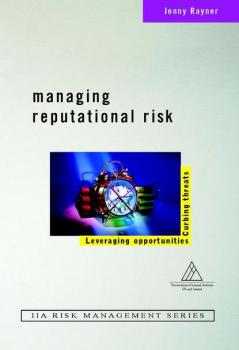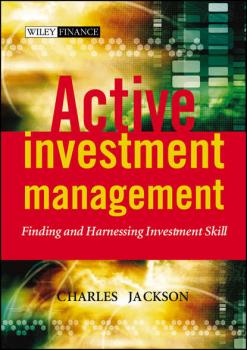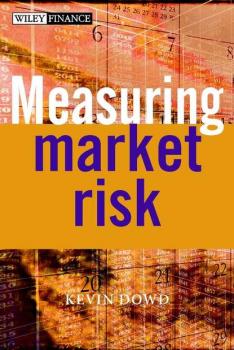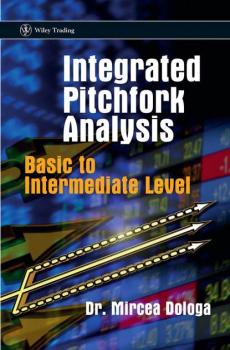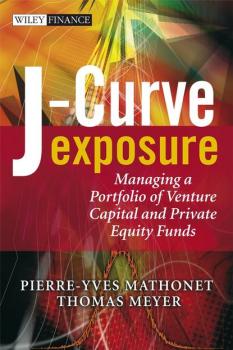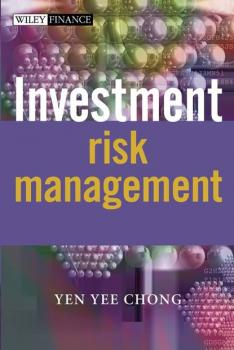ТОП просматриваемых книг сайта:
Зарубежная деловая литература
Различные книги в жанре Зарубежная деловая литература, доступные для чтения и скачиванияАннотация
Managing Reputational Risk shows how any organisation can apply simple risk management principles to build stakeholder confidence and safeguard and enhance reputation. It positions reputation and its associated threats and opportunities where they rightfully belong: in the domain of the board room, at the heart of good corporate governance, leading-edge strategy development, effective risk management, corporate responsibility, comprehensive assurance and transparent communications. Illustrates, through numerous examples of good – and not so good – business practice, the importance of respecting and nurturing reputation as a critical intangible asset. Demonstrates how mastery of reputation risks can enable an organisation to be seen as responsible and responsive, as well as equipping it to meet the challenges that lie ahead.
Аннотация
A proven way to manage risk in today's business world Understanding how the risk process works is a critical concept that business professionals must come to learn. For those who must understand the fundamentals of risk management quickly, without getting caught up in jargon, theory, mathematics, and formulas, Practical Risk Management is the perfect read. Written in a clear, fast-paced and easily digestible style, this book explains the practical challenges associated with risk management and how-by focusing on accountability, governance, risk appetite, liquidity, client risks, automated and manual processes, tools and diagnostics-they can be overcome. After finishing this book, readers will have a solid understanding of the risk process, know which issues/questions are of critical importance, and be able to determine how their specific risk problems can be minimized or avoided. Erik Banks (Redding, CT) is currently Chief Risk Officer for Element Re. Prior to that he spent several years at Merrill Lynch in market/credit risk management roles in London, Tokyo, Hong Kong, and the United States. He is also adjunct Professor of Finance at the University of Connecticut, where he teaches MBA students. Richard Dunn (London, UK) works for Merrill Lynch. He single-handedly restructured Merrill Lynch's risk function post in 1998 into its current form.
Аннотация
Active Investment Management looks at where active management has come from, where it is today, what problems it faces and where the answers to these questions are leading it. The book addresses the major issues concerning the key groups within the industry. Charles Jackson's wonderfully readable book will be essential reading for the practitioner and is broken down into five sections covering the whole spectrum of active investment management: * asset classes and products * balancing risk and return * active product selection * the nature of skill * the price of skill .
Аннотация
The most up-to-date resource on market risk methodologies Financial professionals in both the front and back office require an understanding of market risk and how to manage it. Measuring Market Risk provides this understanding with an overview of the most recent innovations in Value at Risk (VaR) and Expected Tail Loss (ETL) estimation. This book is filled with clear and accessible explanations of complex issues that arise in risk measuring-from parametric versus nonparametric estimation to incre-mental and component risks. Measuring Market Risk also includes accompanying software written in Matlab(r)-allowing the reader to simulate and run the examples in the book.
Аннотация
Diderich describes tools and techniques, which can be used to develop quantitative models for actively managing investment products, and focuses on how theoretical models can and should be used in practice. He describes the interaction between different elements of an investment process's value chain in a single and consistent framework. A key focus is placed on illustrating the theory with real world examples. At the end of the book the reader will be capable of designing or enhancing an investment process for an investment or portfolio managers products from start to finish. * Increased pressure to add value through investments makes this a hot topic in the investment world * Combined theoretical and practical approach makes this book appealing to a wide audience of quants and investors * The only book to show how to design and implement quantitative models for gaining positive alpha
Аннотация
Integrated Pitchfork Analysis: Basic to Intermediate Level is an introductory text to the branch of Technical Analysis which uses the Andrews' pitchfork trading technique. Designed for traders with no experience of Pitchfork Analysis this book demonstrates how to analyse the markets and trade using pitchfork analysis, assisting the novice trader in achieving a consistent performance. Written by experienced trader, Dr Mircea Dologa, founder of www.pitchforktrader.com, the book begins by introducing and discussing the basic theory of pitchfork trading, providing a description of the technique, how to analyse the charts and how to make a decision based on that analysis. It then moves on to the more practical aspects about the low risk high-probability trade from its inception to its termination. Crucially expert guidance on money management and risk management techniques – when to get in, when to get out and where to locate the initial or trailing stops is also provided. Ultimately Integrated Pitchfork Analysis: Basic to Intermediate Level will teach you how to trade, how to follow the markets and how to consistently make money. Reviews “Dr. Mircea Dologa picks up where Dr. Alan Andrews left off in his breakthrough studies of “pitchfork” pattern analysis. In his new book, the author has taken the interpretation and application of “pitchfork” patterns to an entirely new level. After studying Dr. Dologa’s well written and very well illustrated book I will never look at a chart the same way again. What Dr. Dologa has done with “pitchforks” is absolutely amazing. You’ve got to read it to believe it. Pitchforks patterns can provide so much practical and useful information that you will be referring to this book over and over. The book ends on a high note with an excellent chapter on Case Studies and Money Management. Traders will want to keep this powerful book handy for frequent reference. Highly recommended.” Chuck LeBeau, Director of Quantitative Analysis for SmartStops.net and co-author of Computer Analysis of the Futures Market, noted trader, lecturer and trading systems developer. “Dr. Mircea Dologa’s book, Integrated Pitchfork Analysis, combines the breadth of evolving theory with the depth of experience acquired from years of practical application, leaving almost no stone unturned in an exploration of the Pitchfork and its application to profitable short-term trading. Many of Dr. Dologa’s ideas are truly innovative, reflecting his understanding of human nature. It would be difficult to find a more complete coverage of Pitchfork trading. It is a mine of (literally) valuable information.” Tony Plummer, Director, Helmsman Economics Ltd. “It has indeed been a privilege for me to have access to Dr Mircea Dologa’s amazing analysis which I consider to be an extremely important contribution to Technical Analysis. His development of Integrated Pitchfork Analysis in synergy with existing state of-the-art trading tools resulting in an easy to use professional edge technique, has not been previously utilized. This undoubtedly increases the improvement of trading accuracy, leading to enhanced confidence with greater profitability for both trading and investing. This book is truly a remarkable achievement in the field of Technical Analysis and Dr. Dologa, like myself, is motivated to educate traders and investors on the wonderful world of Technical Analysis and how it can help them in these volatile markets. I believe Dr. Dologa will join the true Market Masters of the 21st Century.” Dawn Bolton-Sm
Аннотация
Hedge Funds of Funds: A Guide for Investors is a comprehensive guide to investing in hedge funds of funds. Written by an experienced practitioner in clear, concise and jargon free language, this book gives an inside view of this often opaque area and empowers readers with the tools to get to the bottom of how hedge funds of funds really work. Key features include: A full description of the skill sets and facets needed in all areas of a hedge funds of funds; A wide-ranging set of questions to ask when assessing every area of a hedge fund of funds; Advice on every part of the process when investing in a hedge fund of funds, from short-listing through to mandate design and benchmarking; Two comprehensive practical examples of investment reports on both a hedge fund and a hedge fund of funds; A comprehensive analysis of recent developments in the field; A glossary of hedge fund terminology to help the reader de-code the jargon associated with the area. This book is essential reading for all those interested in developing depth to their understanding of how to invest in hedge funds of funds and how they, in turn, invest with hedge funds.
Аннотация
Building on the success of the author’s previous book Beyond the J Curve:Managing a Portfolio of Venture Capital and Private Equity Funds, this work covers new and additional material and offers advanced guidance on the practical questions faced by institutions when setting up and managing a successful private equity investment programme. Written from the practitioner’s viewpoint, the book offers private equity and venture capital professionals an advanced guide that will make high return targets more realistic and sustainable. Factors that can sometimes cause institutions to shy away from venture capital are the industry’s opaque track record, unclear valuations and risks, perceived lack of transparency as well as the significant entry barriers to overcome before tangible results show. These issues are all addressed in details with practical solutions to the problems. Among other topics J-Curve Exposure includes discussions of: Experiences with the adoption of the International Private Equity and Venture Capital Valuation Guidelines to address fair value under IFRS. Approaches for splitting and prioritizing distributions from private equity funds. Techniques for track record analysis and other tools to help limited partners in their due diligence. Approaches to dealing with uncertainty, the relevance of real options, and co-investments and side funds as advanced portfolio management techniques. Questions related to limited partner decision making fallacies and how to manage portfolios of VC funds. Securitization backed by portfolios of investments in private equity funds. Real life case studies illustrate the issues relevant for the practitioner.
Аннотация
Risk has two sides: underestimating it harms the investor, while overestimating it prevents the implementation of bold business projects. This book explains, from the point of view of the practitioner, the analysis of investment risk – a proper account of adequate risk management strategies – and offers an objective and readable account of the most common investment risk management procedures. It will not be highly mathematical, although mathematical formulae and technical graphs will be used where necessary, and will not rely on excessive technical jargon. The author also covers guidelines of regulatory institutions that protect the market and the investor: Bank of International Settlements, US SEC and UK FSA.
Аннотация
Derivatives Models on Models takes a theoretical and practical look at some of the latest and most important ideas behind derivatives pricing models. In each chapter the author highlights the latest thinking and trends in the area. A wide range of topics are covered, including valuation methods on stocks paying discrete dividend, Asian options, American barrier options, Complex barrier options, reset options, and electricity derivatives. The book also discusses the latest ideas surrounding finance like the robustness of dynamic delta hedging, option hedging, negative probabilities and space-time finance. The accompanying CD-ROM with additional Excel sheets includes the mathematical models covered in the book. The book also includes interviews with some of the world’s top names in the industry, and an insight into the history behind some of the greatest discoveries in quantitative finance. Interviewees include: Clive Granger, Nobel Prize winner in Economics 2003, on Cointegration Nassim Taleb on Black Swans Stephen Ross on Arbitrage Pricing Theory Emanuel Derman the Wall Street Quant Edward Thorp on Gambling and Trading Peter Carr the Wall Street Wizard of Option Symmetry and Volatility Aaron Brown on Gambling, Poker and Trading David Bates on Crash and Jumps Andrei Khrennikov on Negative Probabilities Elie Ayache on Option Trading and Modeling Peter Jaeckel on Monte Carlo Simulation Alan Lewis on Stochastic Volatility and Jumps Paul Wilmott on Paul Wilmott Knut Aase on Catastrophes and Financial Economics Eduardo Schwartz the Yoga Master of Quantitative Finance Bruno Dupire on Local and Stochastic Volatility Models

